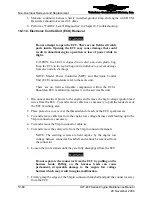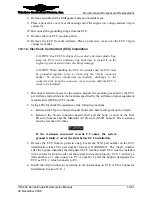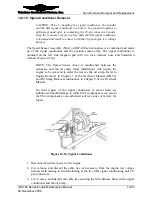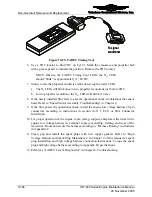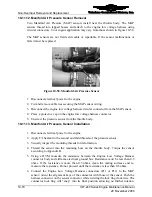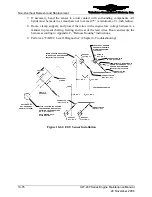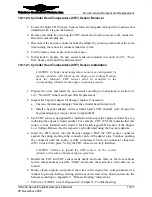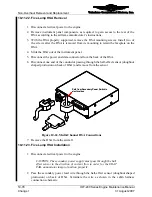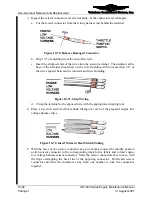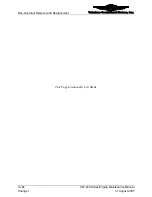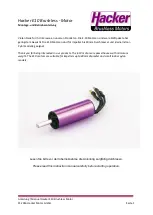
Teledyne Continental Motors, Inc.
TM
Non-Overhaul Removal and Replacement
IOF-240 Series Engine Maintenance Manual
10-69
31 August 2007
Change 1
NOTE: A Borroughs PN 6185 Fuel Injector Removal and
Installation Tool may be used to remove the fuel injector.
7.
Thread the injector body into the cylinder head. Use a deep well socket to torque the
fuel injector according to Appendix B.
8.
Install the fuel injection solenoid according the instructions in section 10-11.11. “Fuel
Injection Solenoid Installation.”
9.
Perform a “FADEC Level I Diagnostics” in Chapter 8, Troubleshooting.
10.
Perform an Engine Operational Check (Chapter 6, Operational Performance Checks).
10-11.11. Fuel Injection Solenoid Installation
CAUTION: Avoid introducing contaminants into the fuel injectors.
Work with clean hands, tools, and shop towels. Place protective
caps on the fuel injectors anytime the fuel line is not connected.
Never insert an object into either end of a fuel injector.
Fuel injector solenoids are designated for specific cylinders with
labels on the Engine Low Voltage Harness near the solenoid.
Solenoids must be matched to the corresponding cylinder for the
engine to operate properly.
Procedure
1.
Verify the label on the fuel injector coil matches the number of the intended
destination cylinder. If the label is missing or illegible, verify the identification with a
DVM and the wiring diagrams in Chapter 8 and replace the label.
2.
Slip the fuel injector coil over the injector body (Figure 10-56) and press down firmly
on the coil to ensure it is seated on the base of the fuel injector body.
3.
Position the coil so the wire is inboard, away from the spark plug. Ensure the coil is
fully seated against the injector body and the shoulder of the wrench flats. Check for
sufficient clearance to the surrounding cylinder head structure.
4.
Install a washer and jam nut on the fuel injector; Hand-tighten the nut to contact the
solenoid. Use a deep well socket to torque the nut according to Appendix B
specifications.
CAUTION: Never use Teflon tape on fuel injection system fittings.
Fuel injection lines must not be bent or deformed. The fuel injection
lines must be securely clamped to the fuel line support brackets. Do
not assemble the components and fuel lines in a binding condition.
5.
Verify the fuel injection lines are not bent or deformed.
6.
Connect the fuel line to the injector; torque the B nut according to Appendix B.
7.
Route and secure the injector lead wire according to Appendix C, “Harness Routing.”
8.
Perform a “FADEC Level I Diagnostics” in Chapter 8, Troubleshooting.
9.
Perform an Engine Operational Check (Chapter 6, Operational Performance Checks).






